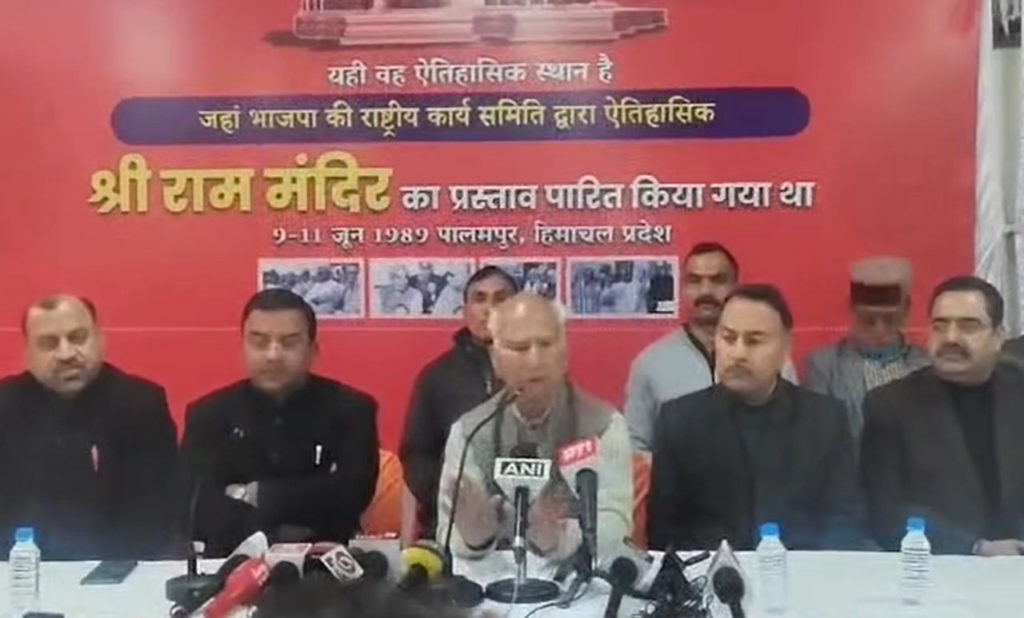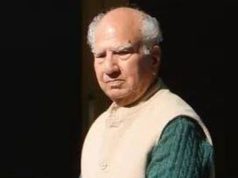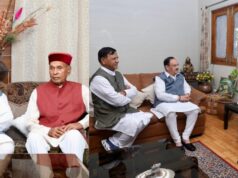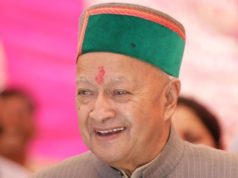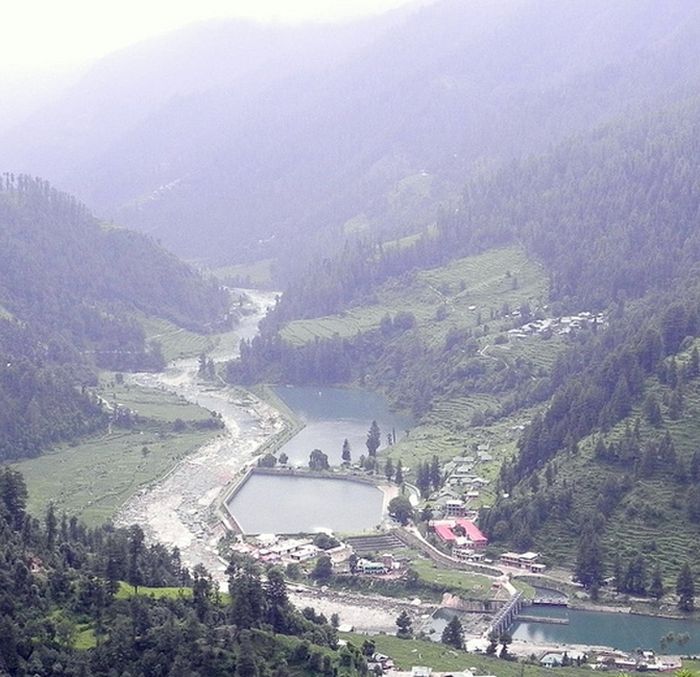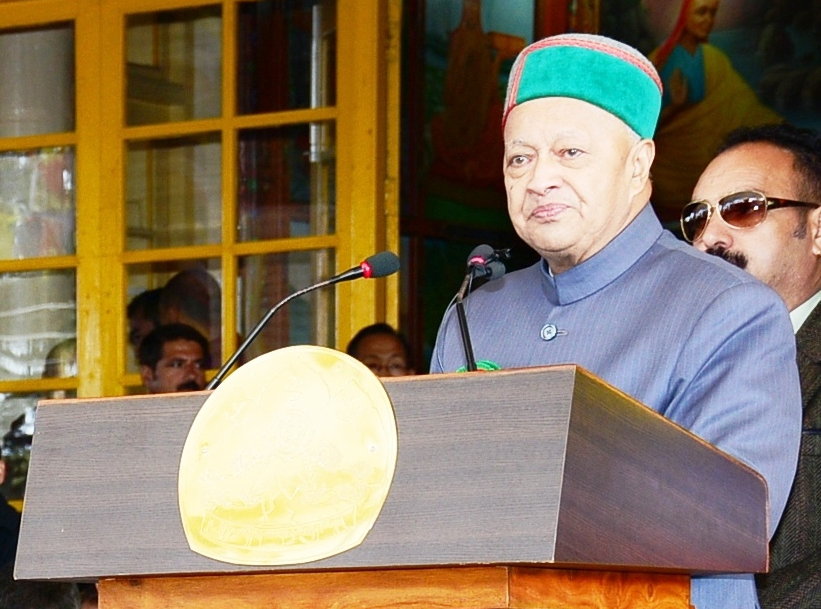Palampur – The ‘pran-pratishtha’ ceremony of Shri Ram in Ayodhya, scheduled for January 22, marks the culmination of a historic journey that began in the quaint town of Palampur, Himachal Pradesh. While the eyes of the nation are fixed on Ayodhya, the roots of this monumental event stretch back 34 years, when the Bharatiya Janata Party (BJP) made a groundbreaking pledge during the National Executive meeting at Palampur’s Rotary Bhawan.
Shanta Kumar’s Reflective Journey: From Palampur to Ayodhya
Former Chief Minister Shanta Kumar, a living repository of memories from the 1989 National Executive meeting at Palampur’s Rotary Bhawan, recounted the transformative moments that birthed a vision. Palampur, a seemingly unassuming town, emerged as the crucible where the Bharatiya Janata Party (BJP) declared its commitment to erect a grand temple dedicated to Lord Ram. The decisions made that day laid the groundwork for a journey that transcends physical boundaries and resonates with the spiritual essence of 40 crore Indians.
Kumar’s narrative extended beyond the joyous occasion of temple completion; it delved into the historical struggle that spanned 500 years. The sacrifices made by devotees, facing bullets and martyrdom, form the emotional tapestry that culminates in the ‘pran-pratishtha’ ceremony. It’s more than a structure; it’s the realization of a collective dream that echoes through the ages.
Virbhadra Singh’s Silent Support: A Bipartisan Effort in Palampur
Late Congress veteran Virbhadra Singh’s role in Palampur was crucial, as Shanta Kumar acknowledged Singh’s unprecedented cooperation during the National Executive meeting. Singh’s support, despite political differences, showcased a rare unity of purpose in the pursuit of a grand temple dedicated to Lord Ram.
Shanta Kumar, while acknowledging Singh’s role, expressed disappointment at the subsequent dismissal of Lord Ram as imaginary by the Congress. He criticized the party, stating that this dismissal amounts to an unforgivable sin that would likely have repercussions in the upcoming Lok Sabha elections.
Beyond Palampur: The Broader Historical Context
The journey towards the Ram Mandir’s construction goes beyond Palampur. The Rashtriya Swayamsevak Sangh (RSS) and the Vishva Hindu Parishad (VHP) played pivotal roles in this long and arduous battle. Their unwavering commitment and tireless efforts were instrumental in keeping the flame of the movement alive, despite numerous challenges.
The RSS and VHP’s decisive battle for the construction of the Ram Mandir has been a cornerstone in shaping the narrative of the Ayodhya dispute. Their perseverance, combined with the political will displayed by leaders like Shanta Kumar, has led to the realization of a dream that has been cherished for centuries.
Palampur’s Rotary Bhawan: A Symbol of Unity
As the ‘pran-pratishtha’ ceremony approaches, Palampur’s Rotary Bhawan has become immortalized in history. Shanta Kumar reminisced about the challenges faced in organizing the National Executive meeting in a town like Palampur and credited the cooperation of Virbhadra Singh and local workers for its success.
The construction of the Ram Mandir stands as a testament to the perseverance and dedication of leaders from different political backgrounds. Palampur, with its pivotal role in shaping the destiny of the Ram Mandir, echoes the sentiment that this temple transcends political boundaries, uniting millions in faith and devotion. The unity displayed in Palampur reverberates in the construction of the temple—a symbol of cultural and spiritual resurgence.


